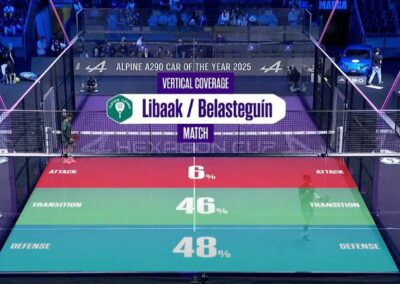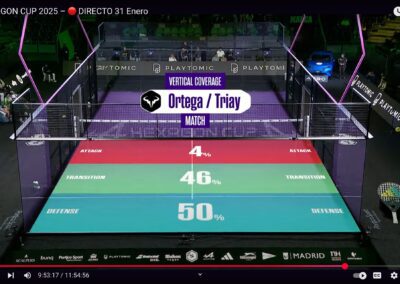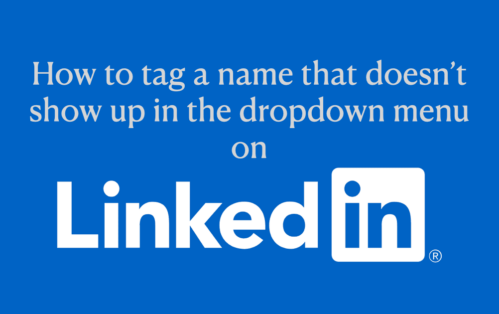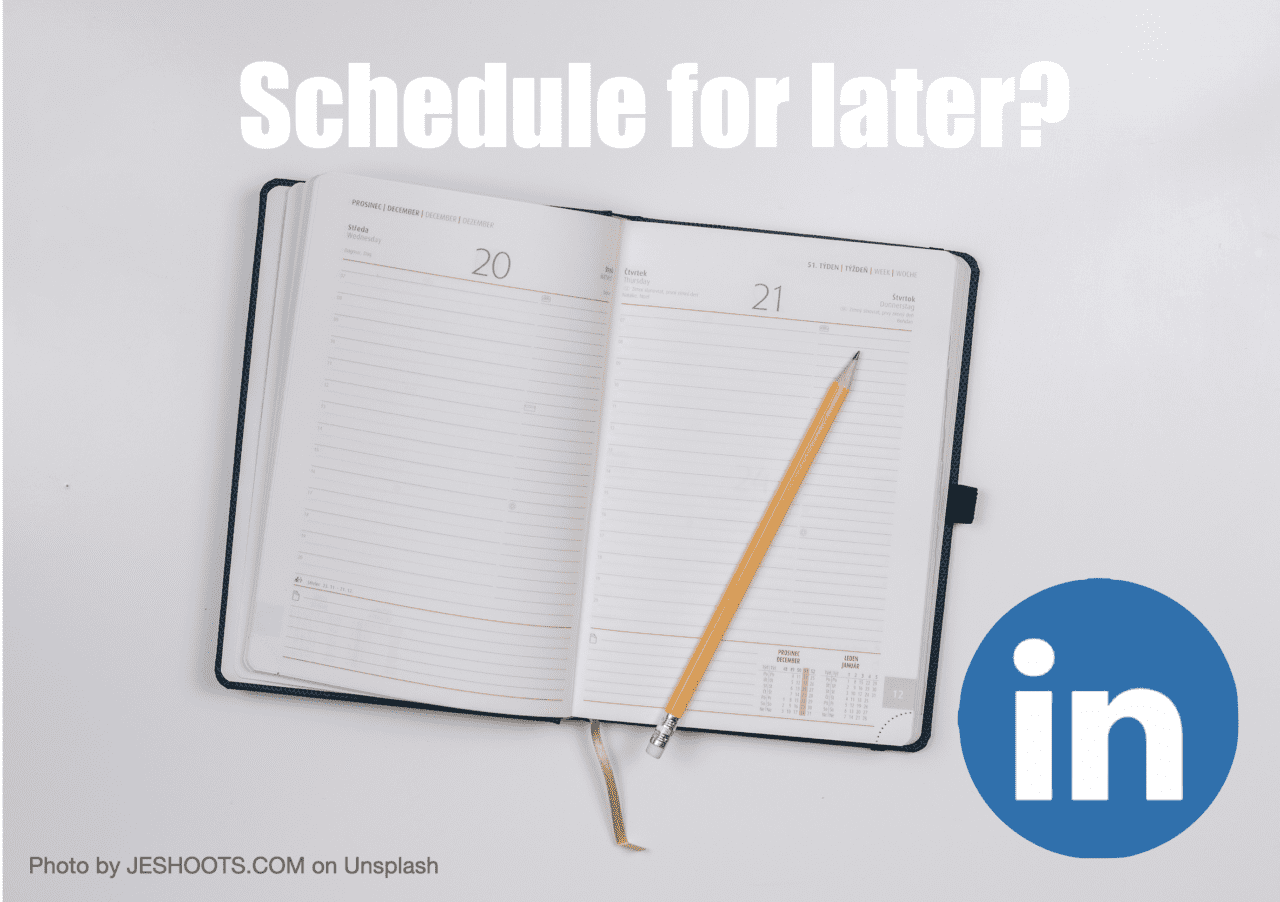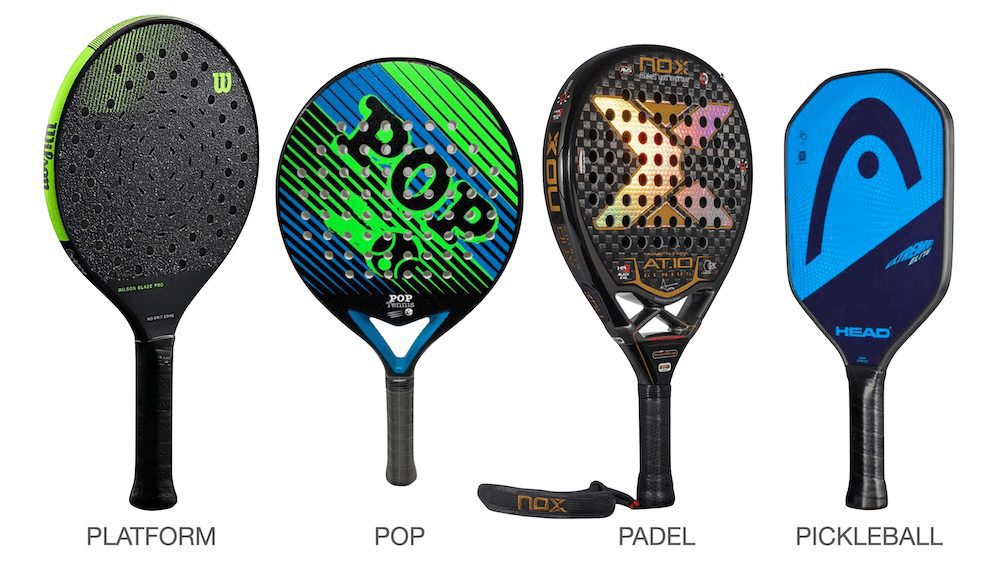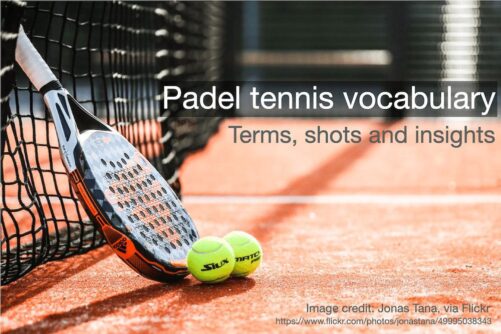The Hexagon Cup: A New Era in Padel
Held in Madrid, the second edition of the Hexagon Cup 2025 was a well-attended and joyful experience. For those who have never heard of it, the Hexagon Cup is a team exhibition tournament, independent of the professional circuit. Created by the founders of Formula E, Hexagon is an example of how padel is taking the world of sport by storm. Its tagline reads: “For the Fans. For the Players. For the Game”
Each team, coming from a different geography around the world, is owned by celebrities and/or financiers. The idea is for fans to find different ways and reasons to get behind one or other team. Some foreign fans attending explained why they went:
Lilly, an English attendee, said she “was curious to see a professional event hosted in Spain, in the home of padel.” Jean-Baptiste from France said he was “keen to see how the new pairings performed, as compared to the regular pairs from Premier Padel.” And indeed, it was a refreshing experience to see how the new pairs did. There were plenty of upsets and surprising results.
Diversity: The Hexagon Cup’s Unique Team Structure
The 5-day event is a feast of padel, entertainment and booths. It’s a spectacle-like atmosphere inside the arena, featuring a DJ, and a crowd animator, as well as some ad hoc musicians in the audience. Each team has a single female and male “franchise” player around whom a full team is assembled, featuring a male and female top pro pair as well as a “Next Gen” team that must be under 22 years old and out of the top 50 in the world. This team structure helps ensure diversity. And it also allows the fans to see different players matched up together. As a testament to its desire for inclusivity, Hexagon also showcased the charity “Palas para todos” (racquets for all), featuring adapted padel for wheelchair players.
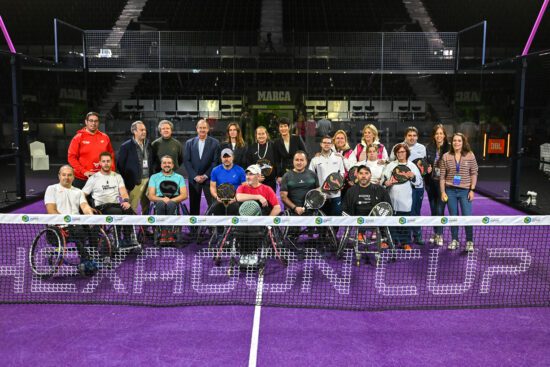
Golden Point: Heightening Tension and Differentiating Padel
From a purely spectator standpoint, to raise excitement, the Hexagon Cup uses the Golden Point (a single decisive point at deuce) which has three advantages. First, it means that no game can be longer than seven points in total. Secondly, it heightens the tension for the fans as the arena turns up the noise and basically creates a drum roll. According to the 2024 stats, there were on average 2.2 Golden Points per set. Thirdly, the sudden death format differentiates padel from tennis. Of course, it’s worth noting that FIP Premier Padel reverted to the normal deuce format, whereas the prior World Padel Tour used the Golden Point, too. Personally, I hope the Golden Point becomes the standard for padel, or if not at least the Silver Point (where the first deuce is played normally, but the second deuce is decisive).
Slow Down You’re Moving Too Fast…
One of the standout decisions taken by the Hexagon Cup organizers was to have a slow court. As co-founder Enrique Buenaventura explained in his interview with me on the Joy of Padel podcast, “if you put a slower turf, it will level everyone. And the points, at the end, will be longer and people will enjoy it.” While the subject of court speed is polemical, I for one enjoyed the slower pace. One of the more interesting observations was how frequently and how much players were in the transition zone, either pressing to get to the net or back-pedalling and returning to defence. You can see this in the graphic below, that was used by the ever-engaging Sandy Farquharson in the commentary box, that because of the slower court, Gemma Triay and Marta Ortega spent comparatively little time glued to the net, spending fully half of their time in defence and 46% of the time in the transition zone (right); and the % in transition was the exact same for Tino Libaak and Fernando Belastaguin (left):
Partner Dynamics: The Crucial Element of Success
In a prior article for The Bandeja, I detailed how the Hexagon Cup 2025 tournament played out and how Team KRÜ took the top honours. But one of the major surprises was how poorly the world’s top-seeded players performed. In fact, between them, Ariana Sanchez, Paula Josemaría, Agustín Tapia (who got injured) and Arturo Coello, won just one match between them all out of 10 matches played at the Hexagon Cup. Of course, they weren’t playing with each other as they are wont to do, but this shows just how important having the right partner is to having success on the court.
What goes into having the right partner? Isn’t that a £1,000 question! As most pros will attest, the recipe is a mixture of technical complementarity (right or left-sided player), gameplay complementarity and, most emphatically, how well you get along with one another on and off the court.
Learning from the Pros
As a padel enthusiast, going to watch the pros play is always inspiring. While the men play at a higher cadence and tend to have more ad hoc brilliance or “magic”, at my level, I find it more enlightening to watch the women. I can learn more from the ladies, because the pace is closer to the one I know, recognising that I’d be taken to the cleaners, if not the bleachers, by them all. Here are some of the pointers I took while watching the women.
- The importance of communication. The chatter between the players, is even more apparent on the women’s side. In talking with Carolina Orsi, world number 28, she explained this was because the points in the women’s game are slower, meaning that there’s more time for instruction and more room for tactical play. In addition, the pro women also talk much more between points, as they tend to share observations, consider tactical adjustments, and otherwise support one another. {Not that the men don’t do any of this, but it was flagrantly more on display between the women}
- In addition to the verbal communication, there’s also very often a tactile component to the exchange. Whether it’s a little “touch in”, fist bump or racquet kiss, each pair almost unconsciously creates a pattern in the ways to keep together. Sometimes, the touch was made right after making an error, as if to say, “No worries. Let’s move on.”
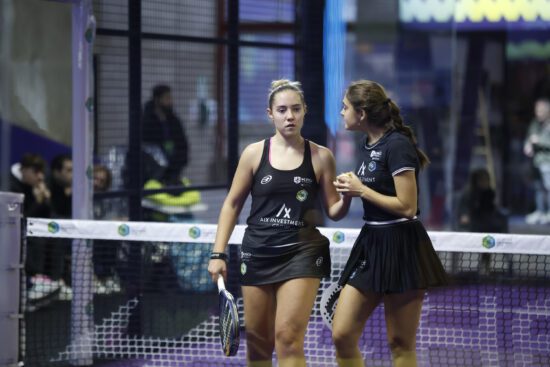
- Each pro has a repertoire of shots, and that’s especially true for the aerial shots, i.e. hitting lobs out of the air. Something I noticed in particular, was the loose wrist that certain players had while playing the “rulo” (directly into the side netting) or dealing with a lob that was slightly over the left shoulder and behind the player (esp on the left). Two players, Tamara Icardo and Gemma Triay, who both play on the backhand side, had tremendous consistency in these shots. Note to self: let my wrist go more often!
- When you’re lobbed and the ball goes over you, rush back! If the pros scurry back to play the ball, there must good reason not to just saunter back. Take a look at how players like Marta Ortega or Claudia Jensen scamper back to take the ball at the best possible height.
- Finally, if you sit and focus on just the speed and margin of error, you will notice that the majority of shots are safe. It’s said that about 70% of pro shots have a high margin of error. In other words, many shots are merely part of a sequence. The objective of most strokes is either to keep the net or win the net, not to win the point. According to PadelIntelligence, the pros make an error (forced or unforced) on a grand total of 6.2% of their shots. That should give you pause to think.
Don’t Be Fooled
In terms of other strokes that caught my attention during this tournament, I saw how some players play far more frequently than others the “contrapared,” a boast off the back wall. The most notable “contrapareders” included Alex Chozas, Paquito Navarro and Aranzazu Osoro. It would be easy to be fooled by the apparently lackadaisical effort, and how nonchalantly they brush the ball back up and over. Not to forget that, typically, these contrapareds are hit with great precision to land around the service line.
Speaking of which, it’s impressive not just the number of lobs that the pros will make, especially on this slower court, but how lethally accurate they are, landing religiously on or behind the service line. Also, thanks to the mile high ceilings inside the arena (alright, a little exaggeration), many of the lobs were sent sky high.
Final Thoughts and Recommendations
If Hexagon is a refreshingly new way to entertain us and spread the joy of padel further, I have two small recommendations for the organisers. First, the signalisation of what was happening on the main court was poor. Most of the time, we in the crowd had little idea who was playing or going to play. It didn’t help that they changed the agenda last minute at least once. While there was an effort to have English announcements, the vast majority was in Spanish which was fine for the Hispanophones, but trickier for monolingual tourists.
Secondly, the lack of clarity was perpetuated by the fact that none of the teams had a systematic colour coding. If members on the bench often carried a specific colour, the team on the court virtually never coordinated. In one men’s match, in fact, all four players had black clothing. A little uniform would go a long way to establishing team identification. Moreover, I didn’t see any merchandising on sale for the teams (a missed opportunity).
Upwards and onwards in any event. The dates for 2026 Hexagon Cup have yet to be announced, but I’ll be happy to attend again.


